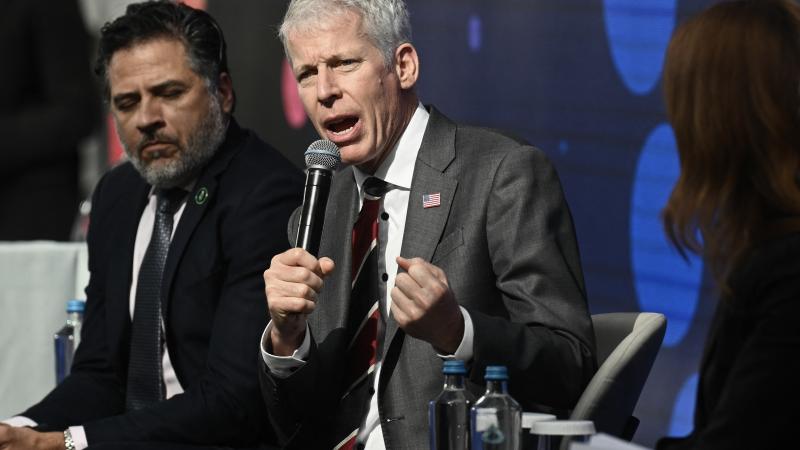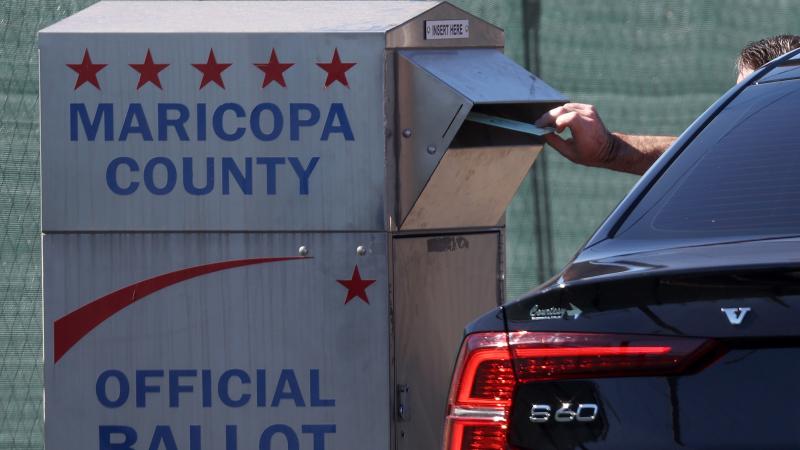New York’s net zero policies leave its grid struggling to support new and expanded industries
New York’s path to net zero aligns closely to that taken by European countries. With energy costs rising, European industries are shutting down. Aluminum production is down 12%, crude steel production is down 10%, paper production is down 6%, and chemical production is down 5%.
A semiconductor manufacturer was looking to expand one of its New York campuses. But as the state tries to eliminate electricity generated from fossil fuels, it finds itself with a dwindling supply to support expanded industrial capacity.
GlobalFoundries’ current factory in Malta, New York, campus employs 2,500 people, according to the Times Union, and the expansion would add 1,500 more jobs. It would also create 9,000 construction jobs between the Malta project and another expansion at a Vermont facility.
The $12.5 billion projects, the Times Union reports, are receiving $1.5 billion in federal funding on top federal loans, and state and local government subsidies.
‘Boondoggle’
Despite the large investment and boost in employment the Malta project would bring to New York, the state worries about its ability to satisfy the increased load on its grid.
The state has been doling out $10 billion in tax incentives to expand semiconductor manufacturing, but at the same time, New York is trying to shut down the remaining fossil fuel-powered generators and replace them with intermittent wind and solar power.
According to the Times Union, New York’s industries are warning that “reliability margins” are being stretched to the breaking point, which could mean brownouts, meaning grid-wide drops in voltage during periods of high demand.
New York state Senator George Borrello has been trying to draw attention to what he says is a disaster waiting to happen as the state relies almost exclusively on wind and solar to reach its net zero carbon emission goals.
“Let's be clear — This is nothing but a multi trillion dollar virtue-signaling boondoggle. That’s all it is,” Borrello told Just The News.
New York’s path to net zero aligns closely to that taken by Germany. While Germany pursued a transition to wind, solar and energy storage, it remained dependent on Russian natural gas. After Russia’s invasion of Ukraine, it sourced the gas from other countries, including the United States. Germany then shut down its three remaining nuclear reactors last year.
Canary in the coal mine
During this attempted transition to wind and solar, the country saw its energy costs skyrocket. German citizens use less electricity per capita today than they did in 1969. The country’s industries are also crumbling under the weight of crushing energy costs. Germany’s economy shrank 0.3% last year, and it’s on track for another stagnant year in 2024.
Manufacturing writer Jim Vinoski explains in Forbes that Germany’s industries now struggle to compete on the world stage. Its chemical and heavy industry sectors are in rapid decline.
“One of the main drivers is policies that have made energy costs skyrocket, and there Germany serves as a canary in the coal mine for other leading industrial nations,” Vinoski wrote.
As energy expert Robert Bryce writes on his Substack, the mandated energy transition is impacting industries across all of Europe. Citing figures from the International Energy Agency in July 2023, he writes that aluminum production in Europe is down 12%, crude steel production is down 10%, paper production is down 6%, and chemical production is down 5%.
Bulgarian energy writer Irina Slav told Just The News that in German culture, the promise of cheap energy from wind and solar was ingrained in its citizens for years.
“There's been a lot of brainwashing going on in Germany — very pointed, very incessant — from the [former German Chancellor Angela] Merkel administration onwards. And this has turned a lot of them into pro-transition activists. The last generation is sort of Extinction Rebellion, but in Germany,” Slav said, referring to the climate activist group known for blocking traffic and gluing themselves to roads.
Plowing ahead
Despite these troubling signs in countries who are much further along on their transition away from fossil fuels, New York and many other states, such as Michigan and Minnesota, continue down a similar path.
New York committed to 100% renewable energy in 2019, and then shut down its last reactor at Indian Point in 2021. Now, it struggles to find enough energy to support economic growth.
Besides the uncertainty of supplying enough power for the GlobalFoundries expansion, New York Gov. Kathy Hochul approved a moratorium in November 2022 on cryptocurrency mining. The moratorium lasts two years and gives the state time to study how the electricity demands of the industry will conflict with the state’s goal of reaching net zero, according to the Times Union.
Borrello said he “grilled” a state official involved with implementing the state’s climate goals, on the efficacy of the state’s energy transition.
“She's an engineer. She's a smart lady. And she was incredibly uncomfortable with my questions, because she knows this isn't going to be able to work. She knows that we cannot do what she's been asked to do,” Borrello said.
Borrello said the state could be pursuing a plan to reduce emissions that includes using nuclear energy, hydroelectric and natural gas. Instead, the path the state is on will require it to import energy from other states using fossil fuels for generation.
“We’re going to…import power from dirty, old-fashioned coal plants to pretend that New York state is zero emissions,” Borrello said.
He said he doesn’t think that people pushing for these policies really care about climate change. If they were sincere about those concerns, he said, they’d be focusing their efforts on China, which emits 27% of global greenhouse gas emissions.
“Their concern is they hate capitalism, and they're trying to take down the United States. And this is the best way to do it,” Borrello said.
Opposition
As the weight of consequences for its energy policies pushes down Germany’s economy, signs are showing that support for green energy is crumbling.
Germany’s conservative party, the Alternative für Deutschland (AfD), has broadened its support, as has conservatives in other European countries, according to Bloomberg. The party promises it would abandon the 2050 net-zero emissions target and tear down wind farms. Now, there’s even talk of trying to ban the group.
“I think the current administration in Germany is really scared,” Slav said.
In the upcoming European Union election, according to Politico, the once popular Greens are poised to lose approximately a third of their 72 seats.
Borrello said a similar revolt against the green transition could happen in America, but right now the demonization of fossil fuels and the belief that wind and solar are cheap continue to drive support for net-zero policies. Possibly, he said, Americans, like the Germans, will have to see for themselves before attitudes change.
“It's going to take a lot of very painful realizations for the average person,” Borrello said.
The Facts Inside Our Reporter's Notebook
Links
- according to the Times Union
- doling out $10 billion in tax incentives
- sourced the gas from other countries
- shut down its three remaining nuclear reactors
- less electricity per capita today than they did in 1969
- Germany's economy shrank 0.3% last year
- explains in Forbes that Germany's industries now struggle
- chemical and heavy industry sectors
- impacting industries across all of Europe
- Extinction Rebellion
- Michigan
- Minnesota
- New York committed to 100% renewable energy
- shut down its last reactor
- approved a moratorium
- emits 27% of global greenhouse gas emissions
- according to Bloomberg
- tear down wind farms
- even talk of trying to ban the group
- according to Politico















